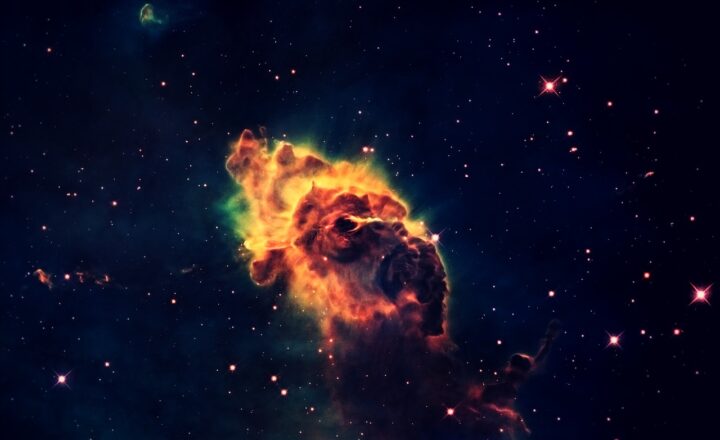
The Solar System, our cosmic neighborhood, is filled with wonders and mysteries that never cease to amaze. From seemingly endless voids of space to colossal gas giants, the diversity of celestial bodies and phenomena is staggering. In this article, we’ll delve into ten unbelievable facts about our Solar System that are sure to astound you.
1. The Sun Makes Up 99.86% of the Mass in Our Solar System
You may already know that the Sun is the center of our Solar System, but did you know that it holds an astounding 99.86% of the entire mass? This enormous gravitational pull keeps all the planets, moons, asteroids, and comets in orbit around it. If you combined all the planets, they would still weigh less than a small fraction of the Sun. It’s a celestial heavyweight that can fit 1.3 million Earths inside it!
2. Jupiter is So Large, It Could Fit All the Other Planets Inside It
Jupiter, the largest planet in our Solar System, is a gas giant that is more than 11 times the diameter of Earth. In fact, its volume is so immense that over 1,300 Earths could fit inside! With a sprawling atmosphere made of hydrogen and helium, it has a magnetic field 14 times stronger than Earth’s and is home to the Great Red Spot – a gigantic storm that has been raging for at least 350 years.
3. A Day on Venus is Longer Than a Year on Venus
In a baffling twist of planetary behavior, Venus has an extraordinarily slow rotation on its axis, taking about 243 Earth days to complete one full rotation. Conversely, it only takes about 225 Earth days for Venus to orbit the Sun. This makes a day on Venus longer than a year, leaving many astronomers scratching their heads in amazement.
4. Saturn’s Rings are Mostly Made of Ice
The mesmerizing rings of Saturn are one of the most beautiful and recognizable features of our Solar System. Contrary to popular belief, these rings are not simply rocks; they are primarily composed of ice particles, with some rock and dust mixed in. The rings extend as far as 282,000 kilometers (about 175,000 miles) from the planet but are astonishingly thin, with an average thickness of just 10 meters (30 feet).
5. Mars Has the Tallest Mountain in the Solar System
Mars is home to Olympus Mons, an enormous shield volcano that stands nearly three times the height of Mount Everest, making it the tallest known mountain in the Solar System. With a height of approximately 22 kilometers (13.6 miles) and a diameter of about 600 kilometers (373 miles), Olympus Mons is a striking reminder of the dynamic geological activity that has occurred on Mars throughout its history.
6. There Are More Stars in the Universe Than Grains of Sand on Earth
Astronomers estimate that there are at least 100 billion stars in our Milky Way galaxy alone. When you take into account the billions of other galaxies in the visible universe, the total number of stars surpasses one septillion (1 followed by 24 zeros). This staggering statistic suggests that there are more stars in the universe than there are grains of sand on all the beaches of Earth.
7. The Solar System is Traveling Through Space
Did you know that our entire Solar System is hurtling through the Milky Way galaxy at a speed of about 828,000 kilometers per hour (514,000 miles per hour)? It takes the Solar System approximately 230 million years to complete one orbit around the center of the galaxy, meaning that as you read this, we’re moving through space at an incredible speed.
8. Neptune Has the Strongest Winds in the Solar System
Neptune, a distant ice giant, boasts the strongest winds among all the planets in the Solar System, with speeds reaching up to 2,100 kilometers per hour (1,300 miles per hour). These powerful winds whip through its thick atmosphere of hydrogen, helium, and methane, creating extreme weather conditions that would be unimaginable on Earth.
9. The Coldest Place in the Solar System is on Triton
Neptune’s moon, Triton, holds the record for the coldest known place in the Solar System, with temperatures plummeting to around -235 degrees Celsius (-391 degrees Fahrenheit). This icy moon is unique as it has a retrograde orbit, meaning it orbits Neptune in the opposite direction of the planet’s rotation, indicating that it may have been captured by Neptune’s gravity during its formation.
10. Our Solar System Might Have a Ninth Planet
Though Pluto was demoted from its planetary status in 2006, some astronomers believe our Solar System might still harbor a ninth planet, often referred to as “Planet Nine.” This hypothetical planet is thought to be far beyond Neptune, and its existence is suggested by the gravitational influence it exerts on distant celestial bodies. While it remains unobserved, the search for this elusive planet continues.
Conclusion
Our Solar System is a vast and wondrous place filled with incredible facts that challenge our understanding of the universe. From the massive size of the Sun to the mysterious presence of Planet Nine, each fact gives us a glimpse into the extraordinary dynamics that govern our cosmic neighborhood. As we continue to explore and learn more about our Solar System, there’s no telling what other mind-blowing facts await us.








